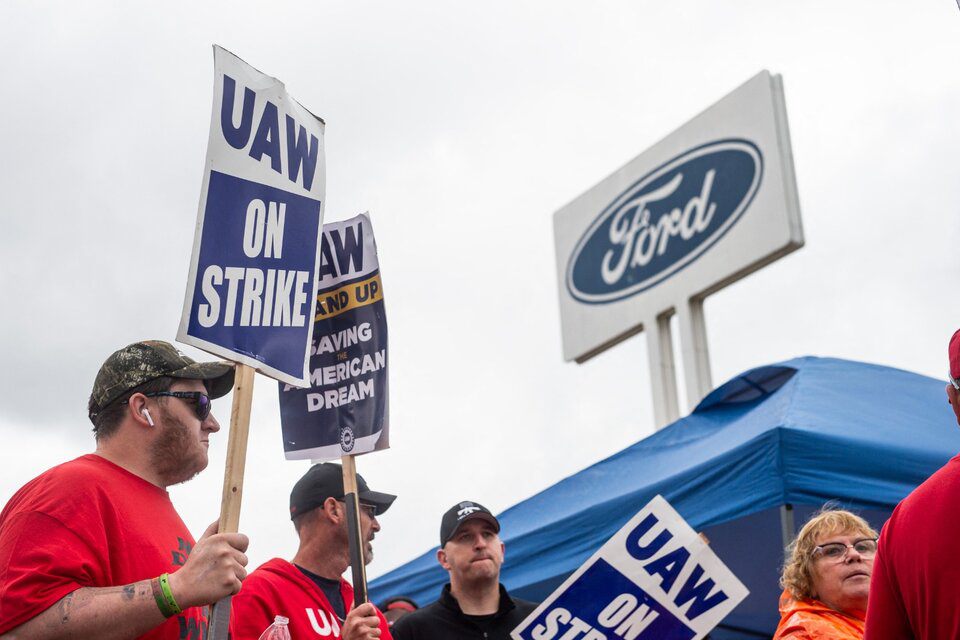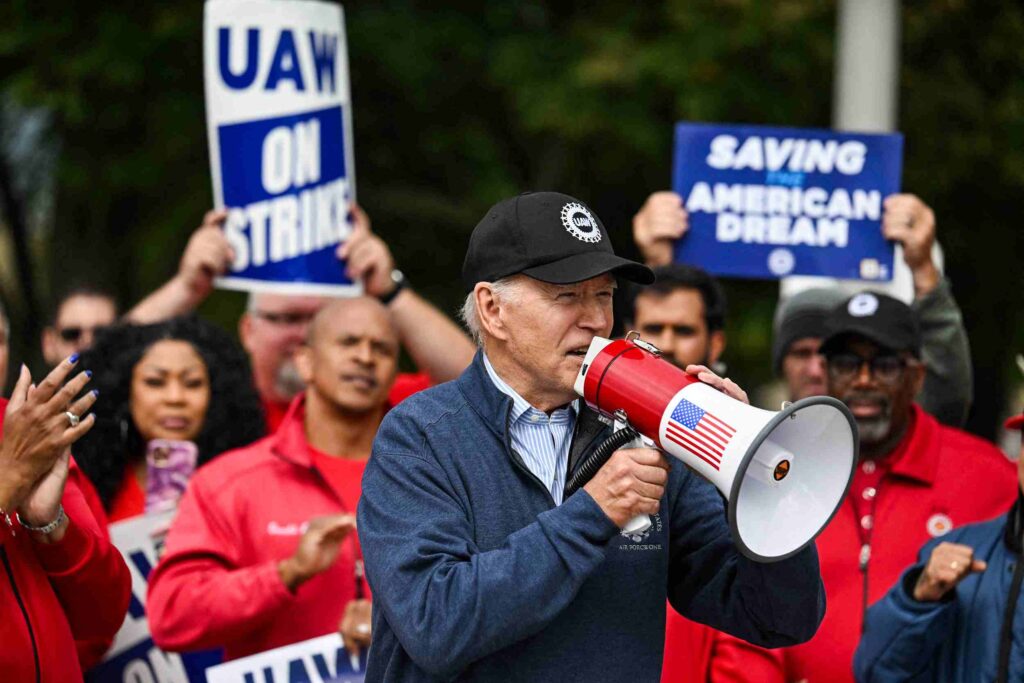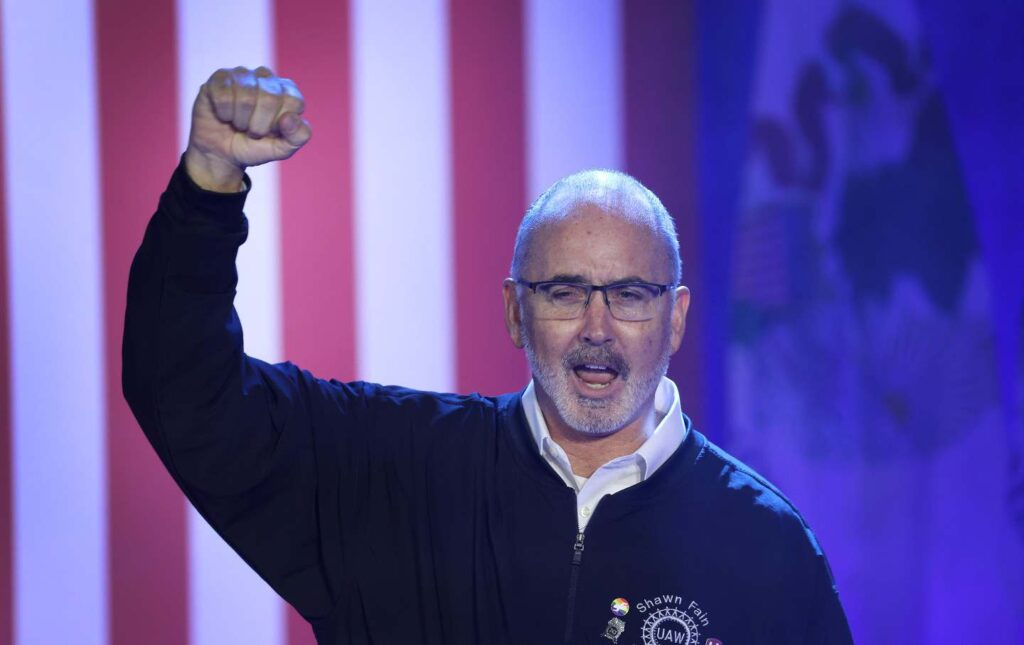
After a series of strikes against the big three in the sector (Ford, General Motors and Stellantis), the American automobile union UAW approved new collective agreements, achieving a first great victory after decades of diluted confrontations: 146,000 unionized workers will raise wages with increases and cost-of-living adjustments among other benefits. A historic mobilization that laid the foundations of the workers’ struggle.
By Carolina Menéndez Trucco
It is worth going on strike. After nine weeks of protest, members of the United Auto Workers (UAW) union have thrown their support behind new contracts with the Big Three American automakers, deals that deliver steep wage increases and other benefits eluded for more than 20 years. General Motors, Ford and Stellantis finally ratified the collective bargaining that ended the strike. In the closest vote, GM won the support of 55% of the nearly 36,000 members who voted. In the case of Ford, the tracking spreadsheet showed a majority (68.2% of the 34,657 voters ratified the agreement) and in Stellantis, 68.4% of 26,289 people were in favor of the agreement. The deals signed by the three companies have had a widespread effect on other automobile companies in the United States. The mobilization that began at midnight on Thursday, September 14 not only involved “a key struggle” for the sector, it also extended its reach to the rest of the working class.

“We won things no one thought possible,” UAW chief Shawn Fain said on the preliminary deal of the new collective agreement. Although the original demand had been a 40% increase (the same amount that employers’ salaries increased recently) and the older employees did not achieve as many improvements as the new ones, the agreements reached imply increases of more than 30% of salaries in four and a half years, along with other improvements in working conditions, employment guarantees and new rights. The union leader had to appeal to combative arguments: by using the record profits of the companies and the multimillion-dollar salaries of his managers, Fain supported the reason for the strikes, validating the wage struggle.
All the wheels stand still…
The production lines had stopped since September 14 at midnight. For the first time in its history, the traditional automobile union was simultaneously waging a labor dispute against the three main companies in the sector in the United States: General Motors (GM), Ford and Stellantis, formerly Chrysler. A week after the protest began, the union expanded the strike from 3 to 38 plants. As negotiations progressed, the demand grew louder: despite fears that a prolonged strike would “affect the economy”, workers continued to fight for better wages at a time when auto companies were reporting higher profits. ““No deal, no wheels!” workers chanted when the current president of the country arrived at Motor’s Parts Distribution Center.
An unexpected visit
The moment Biden joined the auto-strike: “Wall Street didn’t build this country, the middle class did, and unions built the middle class.” Quite far from being able to earn the position of comrade or reliable partner for the working class, Joe Biden is the first US president to join the striking workers in person. With a megaphone, a union cap and in sportswear, the leader of the Democratic Party addressed the strikers: “You made a lot of sacrifices, gave up a lot. The companies were in trouble. Now they are doing incredibly well and guess what? You should be doing incredibly well, too,” he said to applause. Recognizing in turn that “they have earned a helluva lot more than what they’re getting paid now“; therefore, they deserved a 40% salary increase.

Even if Fain has not endorsed Biden so far, he has praised his appearance at the UAW rally in Michigan, and it would not be wrong to expect some response from the sector. On several occasions, the president has claimed that auto companies have not done enough to meet union demands, especially after making concessions following the 2008 financial crisis. Biden’s unprecedented gesture is due not only to the strength of the strike, but also to his need to seek the support of the unions for next year’s presidential elections.

A historic triumph
Although there are variations between the different agreements, in all of them the increase is 25% in hourly remuneration until April 2028, and with some adjustments for the cost of living it will be more than 30%. The agreements also include improvements in pensions, the end of tiers (shortening the period of application of the double salary scale), the incorporation of temporary workers as full-time workers, a 32-hour workweek with a 40-hour salary and the right to strike if a plant closes.
The salary improvements from this agreement are greater than those accumulated in the last 22 years. There is also an inflation adjustment, which had been abolished after the crash of 2008. Its reinstatement is one of the many achievements that the sector was able to gain. The UAW strike was undoubtedly the largest in decades. The proposed agreements mark a record for the union, which was significantly more combative and strategic during the negotiations than in recent history. The victory was a huge step forward in the quest to build a broader, bolder labor movement
However, the mobilization takes place in a context of energy transition that poses a crossroads for the working class. The move toward electric vehicles brings nothing but new confrontations: while the UAW union will now seek to include workers from non-union factories, such as those of Tesla and foreign companies, low-wage and non-union plants will be a challenge. In the main imperialist power in the world, where struggles for decent wages, better working conditions and the right to join unions are growing, the triumph of the autoworkers strengthens the entire working class.








